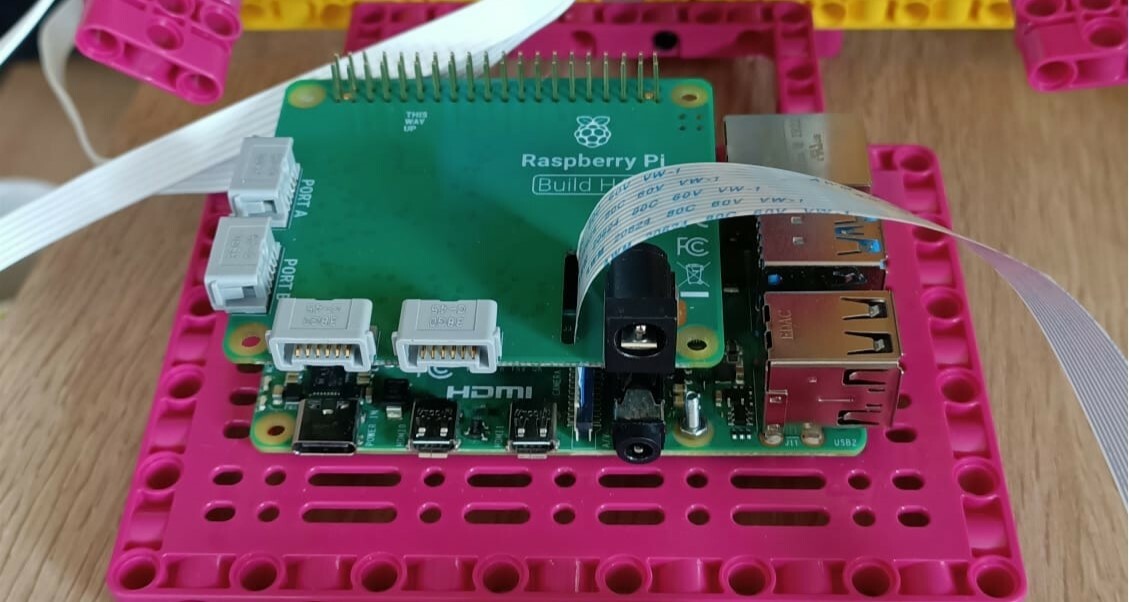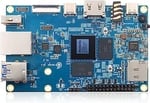In the ever-expanding landscape of technology, single-board computers (SBCs) have gained significant popularity, particularly within DIY and maker communities. These small yet powerful devices have revolutionized the way enthusiasts and hobbyists approach projects, providing a versatile platform for innovation and creativity.
SBCs are compact devices that have the key components of a computer, including a processor, memory, storage, and input/output interfaces, built onto a single circuit board. SBCs serve as a complete computing platform, enabling users to run operating systems, software applications, and connect various peripherals. They’re well suited for complex applications that require multitasking, graphical interfaces, and networking capabilities.
The appeal of SBCs lies in their affordability (chip shortage notwithstanding), ease of use, and adaptability to a wide range of projects. From running a smart home and retro gaming consoles to robotics and IoT applications, SBCs have become a go-to choice for DIY enthusiasts and makers.
Among the available options, the Raspberry Pi 4 and the Orange Pi 5 feature powerful processors, great memory capacity, and support for running full-fledged operating systems.
In this article, we’ll dive into the world of SBCs, comparing the Raspberry Pi 4 and Orange Pi 5, exploring their features and capabilities, and looking into how they cater to the diverse needs of users.
Head to Head

So, they’re both named after fruits. What else should you know about them?
Raspberry Pi 4
The Raspberry Pi 4 is a popular single-board computer known for its official support from the Raspberry Pi Foundation and its vibrant community, and it has become a household name in the world of SBCs. Loved by hobbyists, tinkerers, and professionals alike, it has gained a reputation for its versatility and endless possibilities in education and DIY projects. Its usefulness can be heightened in a variety of ways, including the readily available and just as accessible HATs. It’s understandable that the Raspberry Pi 4 has become a go-to choice for those seeking a versatile and powerful computing platform.
Orange Pi 5
The Orange Pi 5 stands apart from the Raspberry Pi 4 with its cutting-edge Rockchip RK3588S chipset, manufactured using the advanced 8nm LP process. This chipset offers notable improvements in performance and power efficiency, making it particularly well-suited for demanding AI applications. Designed to push boundaries and cater to advanced applications, it opens up new avenues for innovation. Embracing the latest technology and a growing user community, the Orange Pi 5 invites users to explore the possibilities of high-performance computing. Whether you’re venturing into AI, multimedia projects, or custom industrial applications, the Orange Pi 5 stands out as a platform that encourages experimentation and pushes the limits of what can be achieved with a compact and affordable computer.
The Specs Compared
Compared Processor
- The Raspberry Pi 4 is powered by a quad-core ARM Cortex-A72 CPU, providing reliable performance for a range of applications.
- The Orange Pi 5 features an 8-core (quad-core ARM Cortex-A55 and quad-core ARM Cortex-A76) CPU, offering efficient processing capabilities.
GPU
- The Raspberry Pi 4 is equipped with a VideoCore VI GPU, ensuring smooth graphics rendering and multimedia performance.
- The Orange Pi 5 utilizes a Mali-G610 GPU, providing solid graphics processing capabilities.
RAM
- The Raspberry Pi 4 offers multiple RAM options, including 2GB, 4GB, and 8GB variants of LPDDR4, allowing users to choose the appropriate memory capacity for their needs.
- The Orange Pi 5 offers a bit more, with RAM alternatives including 4GB, 8GB, 16GB, or 32GB of LPDDR4/4x RAM. It provides ample memory capacity for a diverse range of computing tasks.
Storage
- The Raspberry Pi 4 relies on a MicroSD card slot for storage, allowing users to easily expand the storage capacity based on their requirements.
- The Orange Pi 5 also utilizes a MicroSD card slot for storage.
Video Output
- The Raspberry Pi 4 features dual Micro-HDMI ports, supporting up to 4K resolution, enabling users to connect to multiple displays simultaneously.
- The Orange Pi 5 offers HDMI 2.1 and MIPI DSI interfaces, providing high-definition video output options.
Networking
- The Raspberry Pi 4 is equipped with Gigabit Ethernet, ensuring fast and reliable wired network connectivity. It also supports Wi-Fi and Bluetooth 5.0.
- The Orange Pi 5 also supports Gigabit Ethernet, Wi-Fi, and Bluetooth 5.0, enabling wireless connectivity for seamless communication and peripheral connections.
USB
- The Raspberry Pi 4 offers two USB 3.0 and two USB 2.0 ports, providing versatile options for connecting peripherals.
- The Orange Pi 5 provides a USB 3.0 port and two USB 2.0 ports, offering convenient connectivity for various devices.
Expansion
- The Raspberry Pi 4 features a 40-pin GPIO header, allowing for the connection of additional hardware and expansion boards.
- The Orange Pi 5 supports PCIe 2.0 and provides a 26-pin GPIO header, enabling users to extend its capabilities through expansion modules.
OS Compatibility
- The Raspberry Pi 4 is compatible with Raspberry Pi OS, which is based on Linux, along with various other Linux distributions, providing a wide range of software options. It also supports Windows IoT Core.
- The Orange Pi 5 is compatible with Android and Linux operating systems, offering flexibility in choosing the preferred OS for different applications.
Price
- The Raspberry Pi 4 is known for its affordable price, with the base model available at $35, making it an accessible option for budget-conscious users. (As mentioned, at time of writing, due to the chip shortage, finding a Raspberry Pi 4 at that price point can be a challenge, to say the least.)
- The Orange Pi 5 is priced at around $150, offering additional features and capabilities for a higher price.
Common Ground

The Raspberry Pi 4 and Orange Pi 5 share common ground in terms of the projects they can be used for. These include home media centers, DIY laptops, retro gaming consoles, IoT projects, robotics, and educational projects. Both SBCs provide a versatile platform for these applications.
In terms of home media centers, both the Raspberry Pi 4 and Orange Pi 5 support multimedia playback and video output, allowing users to create their own media centers and stream videos, play music, and access online content. For retro gaming enthusiasts, both boards are popular choices. Users can install retro gaming software and connect USB game controllers or use GPIO pins to build custom gaming consoles that emulate classic gaming systems.
The Raspberry Pi 4 and Orange Pi 5 are well-suited for IoT projects, thanks to their networking capabilities, GPIO pins, and support for various sensors and actuators. They can be used to build IoT devices and home automation systems. In robotics projects, both SBCs can handle motor control and sensor integration, and run AI algorithms for autonomous navigation.
Differences

When comparing the performance of the Orange Pi 5 and the Raspberry Pi 4, it’s important to note that the Orange Pi 5 utilizes the ARM Cortex-A55 CPU, which provides improved efficiency and AI capabilities. In terms of AI applications, this could involve implementing image recognition, speech recognition, and natural language processing. On the other hand, the Raspberry Pi 4 relies on the ARM Cortex-A72 CPU, which offers better overall performance. The choice between the two depends on specific computational requirements.
In terms of connectivity and storage, the Orange Pi 5 stands out with its advanced options. It provides PCIe Gen2 x2 and SATA 3.0 interfaces, making it suitable for high-speed data transfer and storage. Conversely, the Raspberry Pi 4 supports USB 3.0 and offers multiple RAM options, allowing for greater versatility. The Orange Pi 5 excels in tasks that require extensive storage, while the Raspberry Pi 4 provides flexibility in terms of RAM and USB connectivity.
And while the Raspberry Pi 4 has the additional ready-made functionality afforded by the previously mentioned HATs, these aren’t compatible with the Orange Pi 5. Unfortunately, there’s no such option for this model. There is a Hi-Fi HAT, but it’s meant for the Orange Pi One and Orange Pi PC, both of which have 40-pin headers.
When it comes to community and support, the Orange Pi 5 has an active user community, although it may not match the size and support of the Raspberry Pi’s. Since the first Raspberry Pi’s release in 2012, the Raspberry Pi community has fostered a large and dedicated group of users, developers, educators, and enthusiasts who contribute to the ecosystem by sharing knowledge, creating projects, and providing support to fellow users. Additionally, the Raspberry Pi 4 is backed by the Raspberry Pi Foundation, which provides extensive community support and resources. For beginners and those seeking a more established ecosystem, the Raspberry Pi 4 offers a reliable option with comprehensive support.
Verdict

Both the Orange Pi 5 and Raspberry Pi 4 pack a punch and are suitable for different uses.
The Orange Pi 5 is suitable for diverse applications in high-end tablets, running Home Assistant, edge computing, artificial intelligence, cloud computing, AR/VR, smart security, and more. It effectively caters to various AIoT industries, providing flexibility and versatility for different use cases.
On the other hand, the Raspberry Pi 4 has support for multimedia playback and video output capabilities, and can be transformed into a home media center or retro gaming machine. It’s also well-suited for IoT projects, thanks to its networking capabilities, GPIO pins, and support for various sensors and actuators. It can be used to build smart home devices, environmental monitoring systems, among other projects.
Moreover, the Raspberry Pi Foundation has actively focused on education, making the Raspberry Pi 4 an excellent choice for academic projects. It offers a hands-on learning experience for students, teaching them programming, electronics, and computer concepts.
That said, the Orange Pi 5 has cutting-edge 8nm LP fabrication technology, the Rockchip RK3588S, which stands as a next-generation AIoT chip. This chip showcases enhanced speed and significantly reduced power consumption, delivering unparalleled performance across a wide range of AI applications.
Ultimately, the choice depends on specific project requirements, such as performance needs, connectivity, storage demands, and community support.
License: The text of "Orange Pi 5 vs Raspberry Pi 4: The Differences" by All3DP is licensed under a Creative Commons Attribution 4.0 International License.
CERTAIN CONTENT THAT APPEARS ON THIS SITE COMES FROM AMAZON. THIS CONTENT IS PROVIDED ‘AS IS’ AND IS SUBJECT TO CHANGE OR REMOVAL AT ANY TIME.


